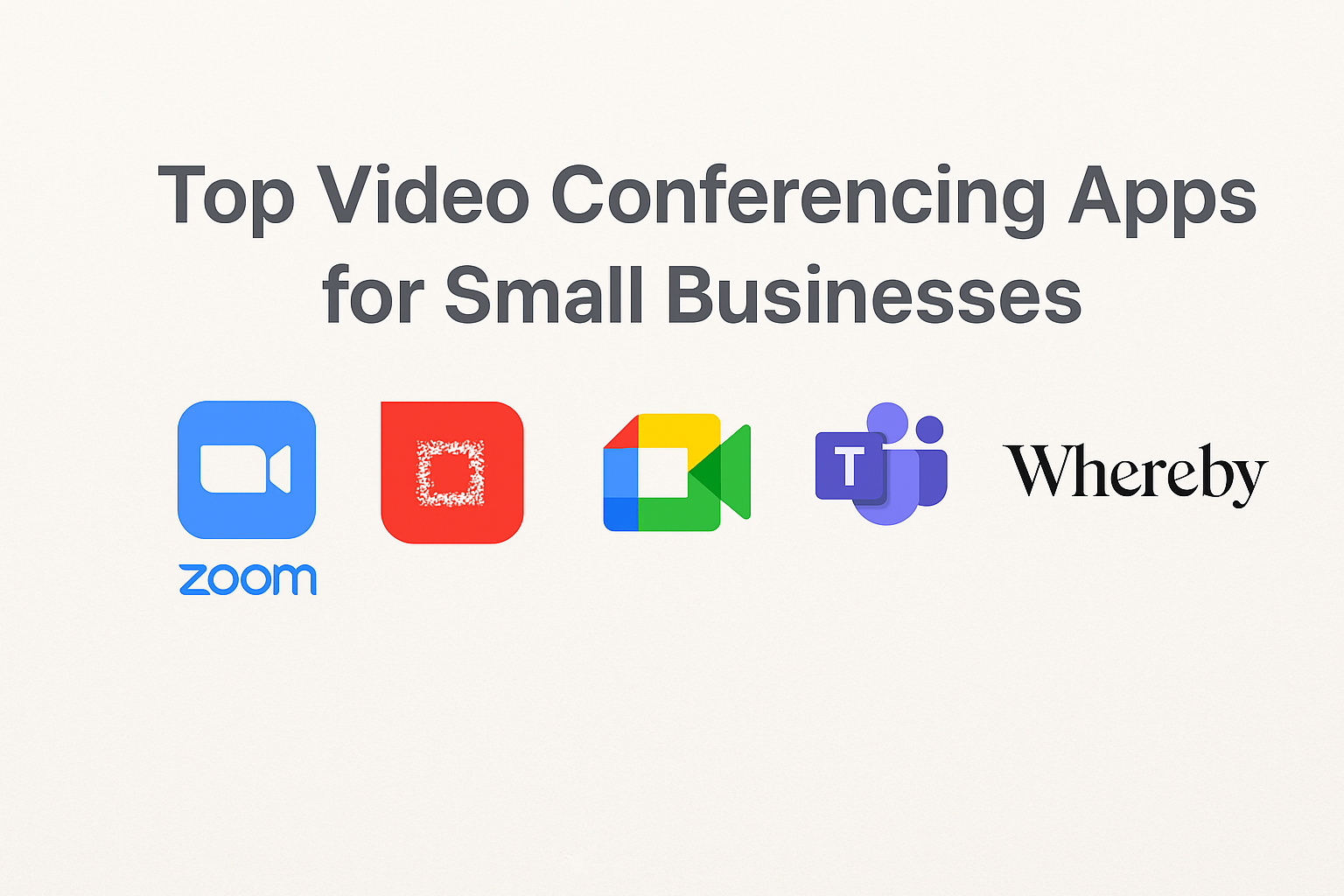Top Video Conferencing Apps Every Small Business Should Try (2026 Edition)

Introduction
For small businesses, communication isn’t just about meetings — it’s about connection. Whether your team is across the city or across continents, the right video conferencing app can bring people together, strengthen relationships, and keep work moving forward.
The problem is, not all tools are built equally. Some focus on simplicity, others on integrations or scalability. The good news? You don’t need an enterprise budget to get professional-quality tools. Modern video conferencing software is smarter, more secure, and more affordable than ever..
Here are the top video conferencing apps every small business should try in 2026 — Zoom, Melp AI Digital Workplace, Google Meet, Microsoft Teams, and Whereby — each designed to keep small teams efficient, connected, and client-ready.
1. Zoom — Reliable and Familiar for Everyday Use
Zoom remains one of the most trusted names in online meetings. For small businesses, it’s the go-to video conferencing app because it delivers reliable performance and simplicity in every meeting.
Whether you’re hosting internal check-ins or pitching clients, Zoom’s clarity and stability make communication seamless. It doesn’t demand much tech setup, which is ideal for small teams with limited IT support.
What keeps Zoom ahead is its ability to scale — you can start small and expand features as your business grows. It also integrates smoothly with other tools, keeping your workflow connected.
Why small businesses rely on Zoom:
- Consistent video and audio quality
- Easy to join from any device, no training needed
- Perfect for client presentations and quick syncs
- Flexible pricing for small teams
- Reliable, recognized, and user-friendly
2. Melp — The AI-Powered Workplace Beyond Just Meetings
Melp is a video conferencing software — but it’s much more than that. It’s an all-in-one AI digital workplace built for small businesses that want to simplify communication, strengthen teamwork, and collaborate beyond organizational boundaries.
Where most video conferencing apps stop at hosting calls, Melp continues the workflow. It brings together chat, meetings, file sharing, and scheduling — all within one connected space. The result is smoother teamwork, clearer communication, and fewer disconnected tools slowing you down.
One of Melp’s biggest strengths is how naturally it supports external collaboration beyond the organization. Your internal team, clients, freelancers, and partner companies can all communicate securely within the same workspace — without juggling multiple apps or email threads. Everything stays aligned, transparent, and easy to track.
Melp transforms meetings from routine conversations into productive results. It helps small businesses stay focused, organized, and connected — inside and outside their organization — while AI quietly handles summaries and clarity behind the scenes.
What small businesses gain from Melp:
- Unified space for both internal and external collaboration
- Smooth communication with clients and partner companies
- AI that turns meetings into clear, actionable takeaways
- Less tool-switching and digital clutter
- Stronger alignment as your business grows
Melp redefines what a video conferencing platform can be — not just a meeting tool, but a connected, intelligent workplace.
3. Google Meet — Simplicity That Just Works
For small businesses that rely on Google Workspace, Google Meet is an easy win. It integrates perfectly with Gmail and Calendar, making it one of the most convenient video conferencing platforms for everyday use.
There’s no need to install heavy apps or manage updates — just click “Join” and you’re in. This simplicity is exactly why startups and small teams love it.
Google Meet’s automatic meeting links, real-time captions, and browser-based setup make it effortless for teams to connect, share, and communicate from anywhere.
How Google Meet helps small businesses:
- One-click access through Gmail and Calendar
- Works entirely in the browser
- Smooth integration with Docs, Sheets, and Slides
- Reliable for quick meetings and internal discussions
- Secure, encrypted calls that protect business data
4. Microsoft Teams — Professional Power for Growing Startups
For startups aiming to scale, Microsoft Teams offers the perfect mix of structure and flexibility. It’s not just video conferencing software — it’s a full collaboration environment that combines chat, meetings, and document sharing.
Because Teams connects directly with Microsoft 365, everything — from spreadsheets to presentations — stays in sync. That makes it easy for small teams to present professionally to clients while keeping operations smooth behind the scenes.
For growing businesses that need enterprise-level communication without enterprise complexity, Teams strikes the right balance.
Why small businesses choose Teams:
- Centralized space for chat, files, and meetings
- Deep integration with Word, Excel, and PowerPoint
- Secure communication across departments and clients
- Scales easily as your startup grows
- Supports hybrid and remote work seamlessly
5. Whereby — Instant Meetings, Zero Setup
Whereby is a lightweight, browser-based video conferencing app that small businesses love for its speed and simplicity. No downloads, no accounts — just a meeting link.
It’s ideal for freelancers, consultants, and agencies that need quick, reliable video calls with clients. Despite its minimal design, it’s secure, stable, and performs beautifully even with limited bandwidth.
Whereby keeps things private, too — meetings are end-to-end encrypted, and only those with access links can join. For small businesses that want fast collaboration without the fuss, Whereby delivers perfectly.
Why it’s great for small businesses:
- Link-based meetings — no sign-ups required
- Clean, user-friendly interface
- Instant collaboration for remote teams and clients
- Reliable call quality and privacy
- Perfect for small, service-oriented businesses
Why the Right Video Tool Matters for Small Businesses
Communication is the backbone of any company — and for small businesses, it can make or break productivity. The right video conferencing software saves time, cuts costs, and helps teams feel closer, even when they’re miles apart.
According to Statista’s 2025 Remote Work Trends Report, 74% of small businesses said video meetings improved client relationships and enhanced their collaboration quality.
Choosing the right video conferencing platform helps you maintain that connection, create smoother workflows, and stay professional in every client interaction.
Conclusion
Small businesses don’t just need meetings — they need meaningful communication. The top video conferencing apps for 2026 — Zoom, Melp AI Digital Workplace, Google Meet, Microsoft Teams, and Whereby — all help companies collaborate smarter, not harder.
